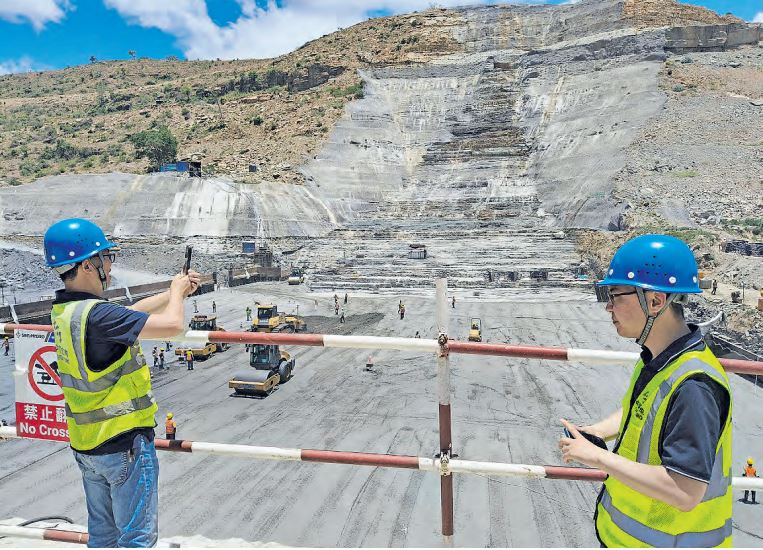CONCRETING of the 18-metre Mwache dam began on Saturday and will continue non-stop, day and night, for at least 18 months.
This marks a significant step towards finally addressing the water shortages that affect most parts of the Coast, especially Mombasa, which has no source of water of its own.
Mombasa, whose population has swelled to more than 1.2 million people, relies entirely on groundwater sources and springs for its water supply, most of which are located long distances away in Kwale, Kilifi and Taita Taveta counties.
These sources include the Baricho waterworks in Kilifi county, Marere springs in Kwale county and Mzima springs in Taita Taveta county.
The second largest city in Kenya shares these water sources with several other smaller towns such as Voi, Kinango, Malindi, Kilifi and Kwale, receiving less than a third of the water supplied by the system.
Part of this is lost within Mombasa’s water reticulation system, and the remaining amount supplied from the public water supply system amounts to just 17.5 per cent of city’s total water demand.
Mombasa’s daily water demand is around 200,000 cubic metres but gets only about 35,000-50,000 cubic metres, meaning there is a deficit of around 75 per cent.
This has forced residents and businesses to rely on private boreholes, wells and water vendors.
On Saturday, Irrigation PS Ephantus Kimotho said the dam will collect 136 million cubic metres of water and will be supplying 186,000 cubic metres daily to Mombasa and Kwale counties for domestic use and irrigation.
“We expect Mwache dam to be complete in February 2027. We are happy with the progress,” Kimotho said at the main dam.
A team from the World Bank led by Saroj Kumar, the global director for Water Global Practice, was with the PS in the tour.
The World Bank has co-financed the project together with the Kenyan government to the tune of Sh20 billion.
Kimotho said the government is committed to the project and has dedicated Sh4.6 billion towards compensation of the project-affected persons.
“So far, the government has paid Sh2.6 billion. We are going to be paying another Sh600 million in the next few months and in the next financial year we’ll be paying the balance of Sh1.4 billion,” PS Kimotho said.
The PS said out of the dam’s water storage capacity of 136 million cubic metres, nine million cubic metres will be dead storage meaning the water that will be fully utilised is 127 million cubic metres.
In dams, dead storage refers to the volume of water below the lowest outlet, which cannot be released by gravity through the dam’s outlet works or spillway, and can only be accessed by pumping.
The design of Mwache dam is such that it has a lower check dam, with a capacity of about 8.6 million cubic metres, to help towards reducing siltation.
“At the same time, that water will be used for irrigation through solar pumping,” PS Kimotho said.
The dam will also have a component of watershed management to protect the water catchments. These catchments will ensure the reduction of silt coming down to the dam.
The watershed management component will be combined with the irrigation component in a programme called Farmer-led Irrigation Development.
“In this programme, we will be doing water pans which will be used to plant the trees for watershed management and will be used to help farmers do irrigation,” Kimotho said.
This has already started and some residents have started reaping from it. Benjamin Mwakipulo, who was previously depending entirely on rain for his agriculture, used to produce two bags of maize in a quarter-acre farm.
Now, using the new irrigation component of the dam project, he is producing seven bags of maize in the same quarter acre farm. And because you can do two seasons with irrigation, Mwakipulo produces 14 bags of maize annually.
“That shows that from the several components of the dam, we are increasing the livelihoods of the farmers,” Kimotho said.
The overall Mwache dam project is 28 per cent complete but the lower check dam is at 60 per cent completion, and is expected to be 100 per cent complete by September.
“The main dam is at 16 per cent completion,” Kimothos said. Two schools, Fulugani primary and Nunguni primary, which have been earmarked for relocation are expected to be complete by May. “This means in third term, the pupils will be moving into their new school,” the PS said.
The schools will also be significantly improved with more facilities expected for them. The new Fulugani Primary School, for instance, will have 30 classrooms as opposed to the original 15.




